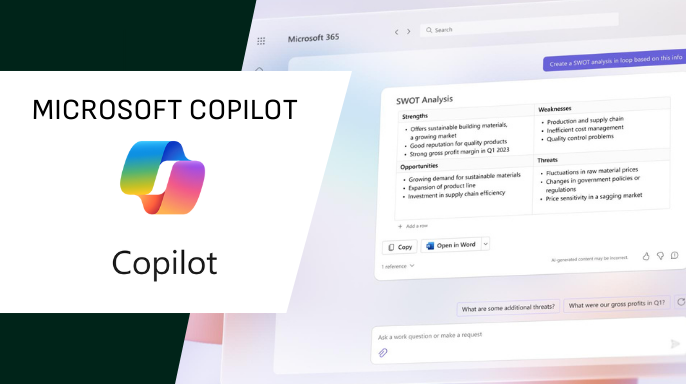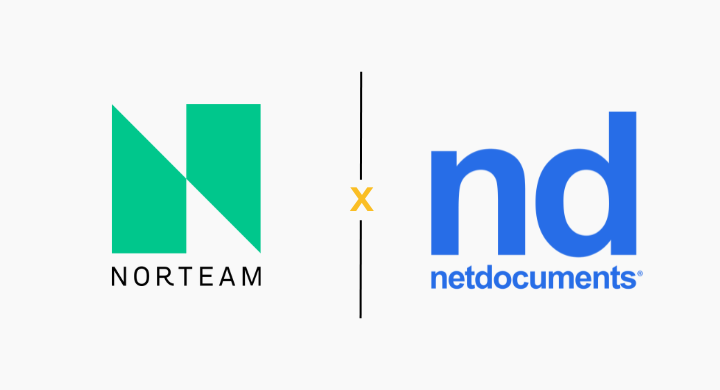The art of writing prompts – Ask AI to get the best possible answer

What is a prompt? Have you come across this trendy expression but wondered what it means? To prompt means to give instructions to artificial intelligence. Perhaps you're a copywriter looking to craft sharper texts? Or do you want to tailor your texts to effectively capture your target audience? How you write your prompts is crucial for the kind of responses you will receive. In this article, we provide you with a brief AI education and offer our best tips on how to formulate your prompts.
Who is your target audience?
The first question you should ask yourself before formulating your prompt is who the target audience is. In other words; Who is the reader of your text? Who is the person you want to see your AI-generated images? What industry do they work in? What professional position or interests do they have? Explain to the AI as clearly as possible what this specific target group looks like and discover how you will get more relevant responses that capture your recipient's attention. Below are suggestions on how you can categorize your target audience.
Age groups:
- Teenagers (13-19 years): Interested in trends, social media, and education.
- Young adults (20-35 years): Focus on career development, self-improvement, and lifestyle choices.
- Middle-aged adults (36-55 years): Interest in health, investments, and family life.
- Older adults (56 years and older): Focus on retirement, health, and leisure activities.
Professional backgrounds:
- Technology enthusiasts: Seeking in-depth technical information, trends in the tech industry, and innovations.
- Marketers: Interested in consumer behaviors, digital strategies, and measuring campaign effectiveness.
- Healthcare professionals: Need scientifically substantiated advice, updates on treatment methods, and patient care.
Geographical locations:
- Residents of urban areas: Often interested in culture, technology, and community services.
- Living in rural areas: May have a greater interest in agriculture, local infrastructure, and community-related issues.
Interests and hobbies:
- Sports enthusiasts: Interested in specific sports, teams, training tips, and competitions.
- Art and culture enthusiasts: Seeking information about events, exhibitions, and artistic techniques.
- Tech enthusiasts: Curious about the latest gadgets, DIY projects, and technical tutorials.
Economic status:
- Budget-conscious consumers: Seeking cost-effective solutions and advice on how to manage finances smartly.
- Luxury-oriented consumers: Interested in premium products, exclusive services, and high-quality brands.
What is the purpose of your message?
A fundamental principle in communication is that every message is formulated with a specific message or purpose. For example, the purpose of this article is to educate recipients on how to improve their prompts. By clarifying the purpose of your message in your prompt, you give the AI the opportunity to deliver customized and relevant responses that are tailored to the recipient's needs and interests. The message can have the following messages and purposes.
Educational – Knowledge sharing and education on a subject. Teach something to the recipient, which can be to understand a subject better, learn new skills, or deepen one's knowledge in a particular area.
Problem-solving – Contains solutions to specific problems or challenges that the recipient is facing. This may involve handling technical issues or personal dilemmas.
Decision-making - Provides relevant information that helps the person to make well-informed decisions. This can be about choosing between different products, services, or courses of action.
Entertainment and enjoyment - Information for entertainment or relaxation, such as movie reviews, travel tips, or interesting facts.
Fact-checking and verification – Validates whether a piece of information is correct or dismisses false claims in an era where misinformation can spread quickly.
Inspiration and idea generation –Suggestions for creative ideas or inspiration for projects, design, writing, or other creative pursuits.
Personal and professional development –Tips for personal growth or career development, such as career advice, leadership tips, or efficiency strategies.
Networking and social interaction -Information about events, groups, or forums where like-minded individuals gather, can lead to meaningful social or professional contacts.
What position should the AI assume?
You can ask AI to act as a copywriter, programmer, accountant, and other roles. Another tip is to include relevant keywords in your instruction to help AI understand the subject and context better to generate more relevant content.
Specify tone and style:
- Professional and informative: Use this when you need answers that are suitable for business meetings or formal presentations.
- Light and entertaining: Great for social media or informal settings where the tone can be more relaxed and engaging.
- Educational and explanatory: Use when the target audience is beginners or when complex subjects need to be broken down into simpler parts.
Specify perspective or role:
- As an expert in a specific subject: Act as a knowledgeable person within a certain field, for example, an economist or a technology specialist.
- As a neutral observer: When you want objective and impartial answers that do not lean towards any specific opinion or standpoint.
- As an advocate or critic: Ask AI to focus on either the positive or negative aspects of a topic to balance or challenge existing views.
Adapt to the target audience's needs:
- For beginners or the general public: Answers that are easy to understand and avoid jargon or technical terms.
- For industry professionals or specialists: More detailed and technical responses that assume the reader has prior knowledge of the subject.
Select the purpose of the response:
- To inform or educate: Ask AI to focus on delivering facts or instructions.
- To persuade or sell: When the answers should motivate the reader to act, such as buying a product or adopting an idea.
- To explore or discuss: When you desire a more exploratory response that addresses various perspectives and stimulates discussion.
What format should the AI respond in?
Clarify your intention for the AI by explaining what kind of response you expect. Do you want facts, advice, or creative ideas? Do you need a summary or analytical insights? Formulate your purpose and avoid ambiguity in your instruction. A common mistake is to describe what you don't want in your prompts, such as 'Don't write too salesy,' but this can easily confuse the AI. Instead, describe what you want, like 'Write a text about [X] and emphasize the main benefits and features for recipients looking for solutions to [X].' Here are suggestions for different formats.
Text:
- Articles and blog posts - In-depth texts that cover a topic in more detail.
- Newsletter - Regular updates sent to subscribers with news, tips, or offers.
- FAQs (Frequently Asked Questions) - Short and concise answers to common questions about a specific topic.
Visual media:
- Infographic - A visual representation of information or data, which makes complex data easily understandable.
- Videos - Engaging visual content that can range from instructional videos to documentaries.
- Images and diagrams - Help to illustrate points and enhance the understanding of the text content.
Digital tools and applications:
- Interactive guides and simulators - Provide users with the opportunity to experiment and learn through interaction.
- Mobile apps - Apps that offer specialized functionality or information directly to the user's mobile phone.
- Web-based tools - Platforms or tools accessible through a web browser that help to perform specific tasks.
Audio format:
- Podcast - Audio content that often focuses on specific topics or industries and may include guest interviews.
- Audiobooks - Audio versions of books, which are convenient for those who prefer listening over reading.
- Audio guides - Audio entries that provide instructions or information in an accessible format.
Interactive presentations:
- Webinars and online lectures - Live or pre-recorded sessions that often allow interaction with viewers.
- Workshops and seminars - Interactive sessions that provide participants with the opportunity to learn through practical experience.
Social media:
- Posts and updates - Quick information shared on platforms like Facebook, Twitter, or Instagram.
- Stories and live broadcasts - Temporary content that offers a more immediate and personal connection with the audience.
Use Microsoft Copilot as artificial intelligence
With Microsoft Copilot, our built-in AI robot, you can get customized answers based on your company-specific data, such as documents, meetings, or email conversations. This ensures that you receive the most relevant and accurate information, unlike ChatGPT, which only uses publicly available data or information shared directly in the chat.
A major difference from ChatGPT is that Copilot does not save any of the analyzed data. This protects sensitive information and trade secrets from falling into the wrong hands.
By using Copilot, you maintain complete control over your data and avoid the risk of unauthorized access or misuse. Furthermore, Copilot does not store data to train the underlying models that govern AI, which further strengthens security. Microsoft also does not have access to users' chat and data history.
With Microsoft Copilot, you can feel confident that your data remains confidential and secure while gaining access to powerful tools to streamline and enhance your work.
Access to Microsoft Copilot and integrations with Copilot are available in Word, PowerPoint, Excel, Outlook, Teams, Loop, and other apps within Microsoft 365.
Save your best prompts directly in Copilot Lab
In Copilot Lab, which is a resource from Microsoft, you can find inspiration and lessons on how to use Copilot. Here you can filter based on the type of inspiration you are looking for and for which app. A feature that Copilot offers, which is missing in ChatGPT, is that you can save your best prompts to easily access them later in other Microsoft applications. For example, you can get inspiration for a prompt in Copilot Lab and save it to quickly access the prompt in Teams.
Some concrete examples of prompts you can use in different roles
Economists: Compare the company's financial key ratios with industry standards and competitors.
SEO Specialist: Act as a technical copywriter with SEO expertise and write an article in Swedish with a maximum of 800 words about [Yoga] based on document [X] for visitors with a commercial search intention.
Programmer: Give me the syntax for function [X].
UX Designer: Suggest activities to optimize the checkout process for our e-commerce platform, based on the responses from our survey questionnaires.
Customer Service Manager: What are the most common complaints from our customers and how can we address them effectively?
Sales Manager: What are the best strategies to increase our sales conversion?
Project Manager: Identify bottlenecks and opportunities for improvement in the project timeline by conducting a risk analysis and creating an action plan to mitigate the risks.
Environmental Coordinator: Evaluate the company's carbon footprint and suggest measures to reduce environmental impact, such as switching to renewable energy or reducing waste management.
Marketing Manager: Conduct a SWOT analysis for the company's marketing strategy and suggest actions to maximize opportunities and minimize threats.
Let AI correct the text
If you are not completely satisfied with the answer you have received, it is important that you are clear about what changes or additions you desire. Here are some ways in which you can give instructions to improve the answer:
Specify what is missing or incorrect:
Explain precisely what in the answer did not meet your expectations or what you feel is missing. For example, "Can you include more statistics or concrete examples?" or "I need more information on aspect X."
Ask for another angle or perspective:
If the answer felt one-dimensional or limited, you can ask to see the question from a different perspective. For example, "Can you describe what this would look like from a consumer's perspective instead?"
Change the tone or depth of the response:
If the tone doesn't fit the context, you can ask for an adjustment, for example, "Can you make the response more formal/professional?" or "Can the answer be more detailed or technical?"
Ask for a clarification or follow-up:
If part of the answer was unclear, you can ask for clarification. For example, "Can you explain what you mean by X?" or "Can you elaborate more on Y?"
Use examples to illustrate your need:
Provide examples of what you expect in the response. For instance, "I would like a response similar to what you gave me last time about Z, can you do that?"
Final words
In summary, it is crucial to be clear and specific when you formulate your prompts to AI. By communicating clearly and distinctly, you increase the chances of getting exactly the information or the answer you need.


